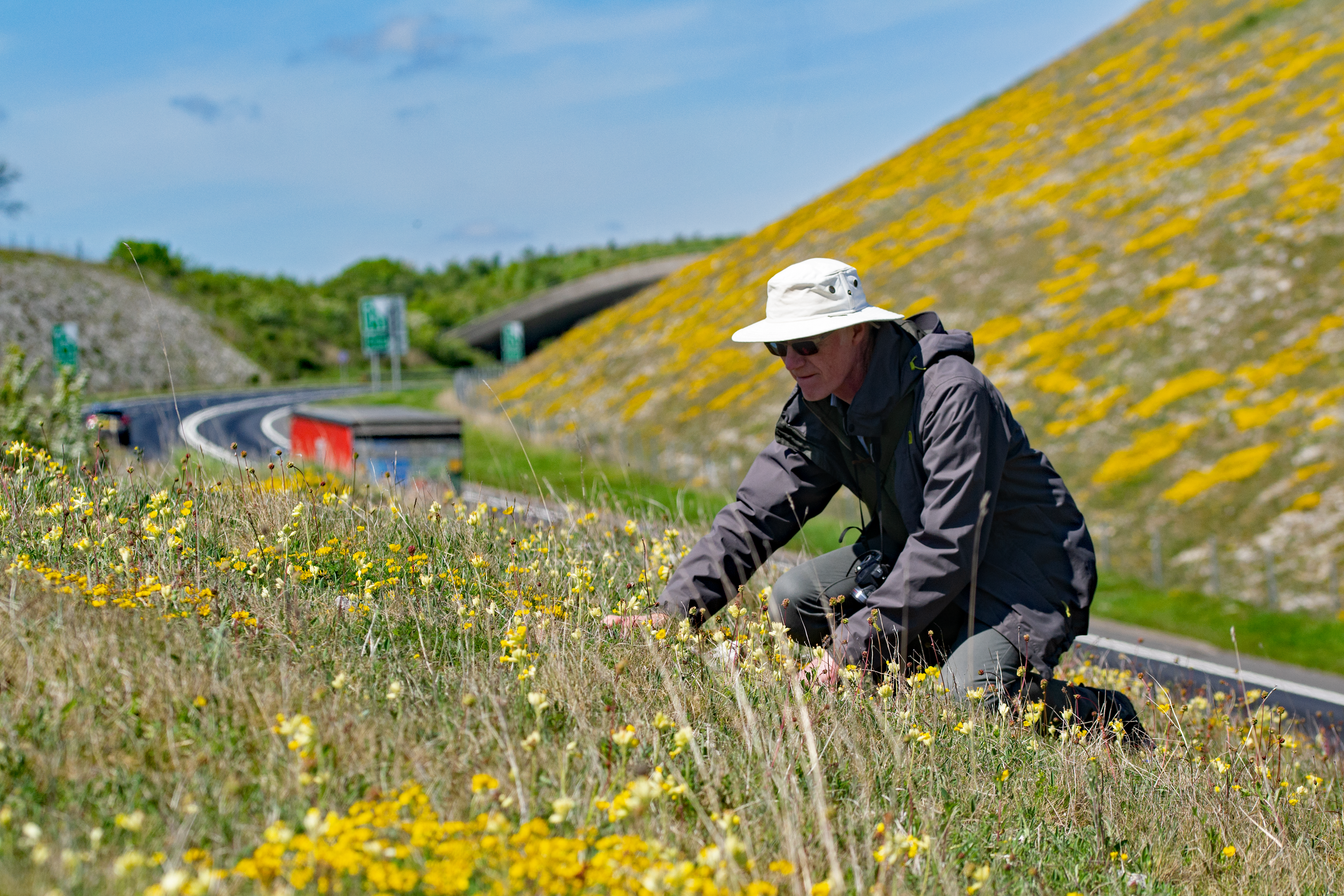I don't suppose that many of us would lose sleep if we found that a planned new road near us was denied its planning consent. With new roads and other large infrastructure projects come inevitable losses of semi-natural habitats, some irreplaceable, potentially adding to the declines of Lepidoptera and other wildlife. it is also hard to see how the rather monotypic landscapes of rank unmanaged grassland, and serried rows of trees and shrubs in plastic shelters that get incorporated into the new road verges do anything to redress those losses.
All this is set to change in coming years, and we should expect that new infrastructure puts back more into the environment than it destroyed in its construction. By example, National Highways (formerly Highways England, and covering England only) has a Key Performance Indicator for no net loss of biodiversity across its estate by 2025 and net biodiversity gain by 2040. This is rapidly changing minds in their project design teams, and we should see big scale habitat creation incorporated into all large road projects, and for new partnerships to emerge between National Highways, local authorities and conservation organisations as they look to meet their targets, and to fund conservation projects both on and off the road network. As an important start, in November 2021, National Highways issued a Major Project Instruction on the use of low nutrient substrates across all their larger schemes, drastically restricting the incorporation of topsoil into open landscapes and instructing instead the establishment of species-rich grasslands on infertile substrates as the new landscape standard.
What is hard to demonstrate currently in a scientific way is the ecological gain that can accrue on new roads through well-designed landscapes. Partly this is down to lack of schemes showing promise, partly to difficulty of access as inevitable road verges can be dangerous places on which to undertake surveys. The Weymouth Relief Road, c.5 km section of the A354 road linking Dorchester and Weymouth in Dorset, has to some extent changed this situation and is a frequently cited example of good practice by National Highways and others in their quest to change approaches to landscape design. The road was built 2009-11 and though my being an integral part of the planning and design teams, the creation of a species-rich grassland was an explicit aim across much of the open landscape. Verges were either left as bare mineral or a scatter of no more than 15mm of topsoil was applied, and all were sown with a calcareous grassland seed mix which included key butterfly foodplants such as Kidney Vetch, Common Bird's-foot-trefoil and Horseshoe Vetch.
At Ridgeway Hill, where the road cuts through the Cretaceous chalk, public access was incorporated across the slopes, including part of the South-west Coast Path, providing the opportunity for long term study of ecological succession from bare chalk to chalk grassland in coming decades. From 2012, within a year of the road opening, volunteer surveyors from Butterfly Conservation had safe access to study colonisation of butterflies and to establish what has now become a transect walk across the main slopes.
The first scientific study on butterfly colonisation of the relief road has now been published (1), using results of surveys 2012-2020 to examine whether butterfly abundance, species richness and species diversity increased and to examine factors that might affect colonisation. The key results are:
- Butterfly abundance increased, as measured by mean counts per survey visit, and maximum counts. This was to be expected, as the bare ground has become sparsely vegetated and covered in wildflowers from spring to autumn.
- Species richness increased, and 30 butterfly species have been recorded on the verges including habitat-restricted species such as Small Blue and Adonis Blue. Chalk Hill Blue colonised for two years but has not been seen recently. Wall is regularly present in low numbers.
- Species diversity showed no significant trend.
- The most important factor affecting speed of colonisation of the verges by a particular species was existing presence in the local area, defined as the number of 1 km squares where two or more individuals of a species had been recorded prior to road construction in a 10 km square centred on Ridgeway Hill.
- The separation distance between the site and the nearest butterfly population did not significantly affect the speed of colonisation. Small Blue colonised the site within 18 months of sowing Kidney Vetch seed; the nearest known colony is over 6km away.
The results are the first I am aware of to quantify the biodiversity benefits of the low-fertility approach to landscape creation on road verges in the UK land management.
Phil Sterling, Building Sites for Butterflies Programme Manager, Butterfly Conservation
(1). Hetherington, M., Sterling, P. & Coulthard, E. (2021) Butterfly colonisation of a new chalkland road cutting. Insect Conservation and Diversity https://onlinelibrary.wiley.com/doi/10.1111/icad.12543


